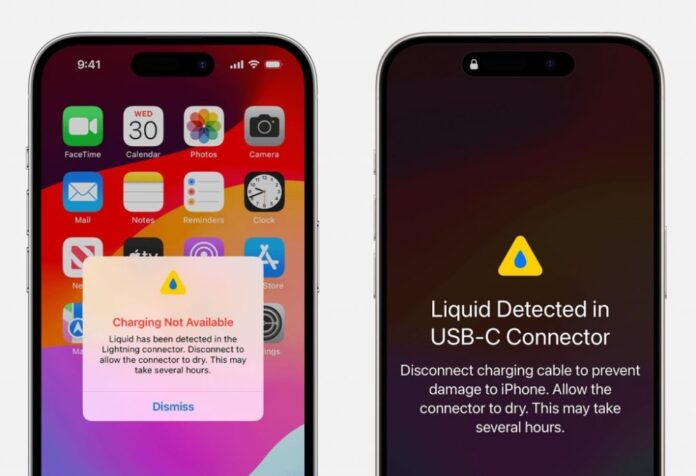KUALA LUMPUR, Feb 20 — Most modern flagship smartphones including the latest iPhone 15 and iPhone 15 Pro series come with IP68-rated water and dust resistance. However, if your phone and its connector get wet, you might not be able to charge if liquid is detected in the charging port.
If you can’t wait for the phone to dry, some might resort to the old remedy of rescuing wet phones — putting them in a bag of rice. Turns out, Apple doesn’t like this method and they warned that it could do more harm to your device.
What you shouldn’t do if your iPhone is wet?
According to Apple’s FAQ on liquid-detection alert on the iPhone, users are warned not to put their iPhone in a bag of rice. It explained that doing so could allow small particles of rice to damage your iPhone.
This is a surprise as the IP68 rating (6 for particle/dust, 8 for liquid) should mean that the device is dust-tight with complete protection against contact. However, we reckon that Apple might be more concerned about getting rice particles or dust getting stuck around the USB-C or Lightning port.
Apple also warns against using external heat sources or compressed air to dry the device. It also warned against inserting foreign objects such as cotton swabs or a paper tower into the connector.
What you should do if your iPhone gets wet?
If your iPhone does get wet and you can’t charge via cable, well, all you can do is wait. Apple recommends tapping your iPhone gently with your hand with the connector facing down to remove excess liquid and then leave it to dry with some airflow. You can try charging the iPhone again after 30 minutes.
If you still get the liquid detection warning, you’ll have to leave it to dry for a couple of hours more before trying again. Apple says the drying process might take up to 24 hours to fully dry. If that doesn’t work, Apple recommends unplugging the cable and the charger from the wall and reconnecting them again. As usual, if all else fails, you’ll have to contact Apple support for possible repairs. — SoyaCincau


